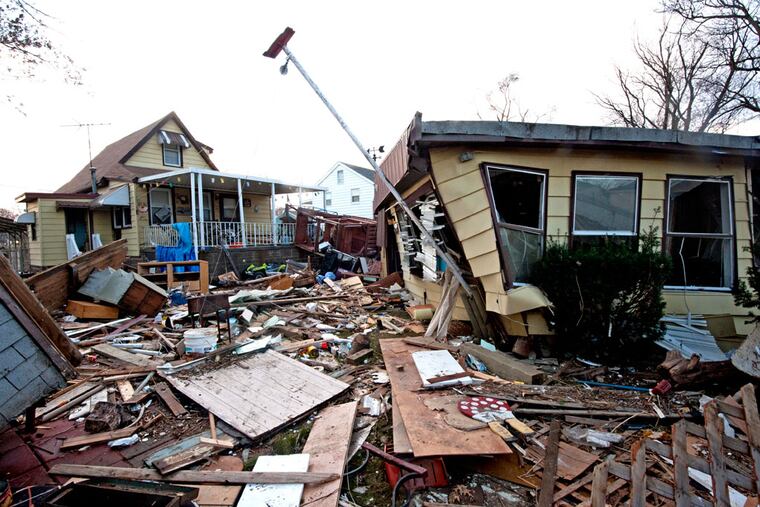Don’t wait for a disaster to take inventory of your belongings
Should the worst happen, you won't have to argue with an insurance company about whether your art deco sideboard was an antique or a 21st-century knockoff.

With floods, fires, tornadoes, super storms, and even cranes toppling onto apartment buildings, no home is completely safe from natural or man-made disasters. Although many of us are prepared to either stick it out with emergency supplies or evacuate to safer locales, only 44 percent of homeowners have inventoried their belongings.
Most of us can't recall what we had for lunch yesterday, much less what's stored in our kitchen drawers. That's why a home inventory is so important. In the event of a claim, insurers require you to substantiate your loss in as much detail as possible.
“The last thing most of us want to do is spend a weekend documenting all our stuff. But almost as heartbreaking as losing a home to a disaster is trying to re-create a home inventory after the fact,” says Carole Walker, executive director of the Rocky Mountain Insurance Information Association.
Before starting your inventory, contact your insurance agent. Ask what sort of documentation is required should you ever need to file a claim. According to Michael Grimes, a spokesman for State Farm insurance, the likely answer is a detailed inventory list, along with receipts, serial numbers, descriptions, and photos. Anything without a specific market value, such as art, jewelry, or collectibles, should be independently appraised.
The prospect of cataloging everything you own can be daunting, but technology can help. Check whether your insurer offers any software, smartphone apps, or other tools to help with the process. Both Allstate and Liberty Mutual have free apps that let you create an inventory of your personal property. The Allstate Digital Locker even allows you to store your inventory in the cloud. State Farm has a home inventory checklist that anyone can download.
Now get organized. Dig out every receipt you can. Locate the make, model, and serial number for appliances and electronics, usually on the back or bottom. If you purchased that refrigerator 10 years ago during a Black Friday sale and tossed the receipt, it’s OK. Open the door and look inside for a plate with the identifying information.
Take items out of boxes. Open drawers and cabinets and pull out anything on back shelves. Remember that your attic, basement, and garage are part of your property, too.
Then proceed room by room. The quickest method is to make a video. Stand in the center of a room and narrate as you record. Film the entire space, including every wall, the ceiling and floor. Describe every item and feature, such as hardwood flooring or that pricey light fixture, to the best of your ability. Some detail is better than nothing.
Little things can add up. Photograph the inside of your medicine cabinet and arrange your bed so you can see the various components — box spring, mattress, linens, and pillows. Count your dishes and silverware. “You don’t have to itemize every piece of clothing, but take a photo of each shelf or section of your closet and count your shoes, ties, or purses,” says Susan Kousek, a certified professional organizer in Reston, Va.
Not Steven Spielberg? Simply create a spreadsheet and supplement it with photos and receipts. Make a folder or page in your spreadsheet for each room — kitchen, bedroom, dining room, and so forth.
If you're more comfortable with a smartphone, consider using one of the aforementioned home inventory apps, which allow you to list each item and attach a photo and supporting documentation such as receipts. Kousek likes HomeZada ($59/year) because it works on both your desktop and phone, and comes with an array of features such as the ability to upload multiple items at one time.
Other popular apps include Sortly, Memento Database, and Nest Egg. Basic versions are free, but to get the full features expect to pay a monthly or annual fee. Regardless of which you choose, make sure you can export the data as a spreadsheet or PDF, in case your phone is lost or damaged or the software expires.
If you don’t have time to perform a home inventory, consider hiring a professional organizer. Expect to spend $75 to $125 an hour, depending on where you live, and to stick around at least part of the time to help explain items.
Once it’s finished, don’t let your inventory become part of the loss. Store it in the cloud, iCloud, Dropbox, OneDrive, or elsewhere. At a minimum, copy your files and any videos to a flash drive and give it to a friend or relative in another town, store it in a safe-deposit box, or email the file to yourself.
Even if you never need to file a claim, a home inventory pays. According to Walker, most homeowners are underinsured. A complete home inventory can help you purchase the right amount of insurance.
And should the worst happen, you'll be able to focus your energies on rebuilding your life rather than on arguing with an insurance company about whether your art deco sideboard was an antique or a 21st-century knockoff.
Denver-based writer Laura Daily specializes in consumer advocacy and travel strategies. Find her at dailywriter.net.